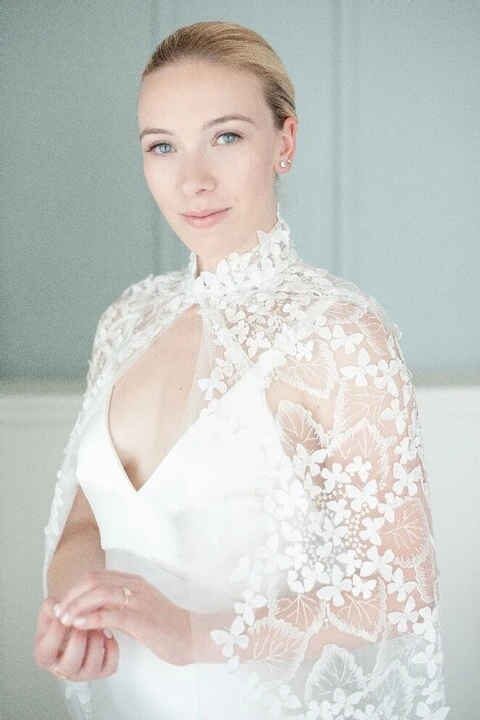In the wise, slightly modified words of Regina George in Mean Girls: Get in, lover, we’re going shopping! When it comes to planning a wedding, there are a lot of important decisions to be made—and for many, one of the most vital and exciting is shopping for and selecting the perfect wedding dress.

How do you begin the search for a wedding dress?
Your wedding dress is so much more than a pretty outfit. It’s a reflection of not only your personal style, but also the overall vibe you’re going for, whether rustic chic or ballroom glam. Because of this, it’s always a great idea to consider both your personal style and the general aesthetic of your venue before wedding dress shopping. At the end of the day, the best wedding gown designs are the ones that you feel your best in, while also complementing the overall look of the event itself.
“I truly advise a bride-to-be to have a fairly firm wedding date, venue, and level of formality or theme for her event before starting gown selection,” says Mark Ingram, a wedding dress designer and owner of the New York City-based bridal boutique Mark Ingram Atelier.



All of these wedding dress ideas are key to selecting the proper and appropriate gown, because you want the dress to fit the environment naturally. A big, voluminous ball gown may look gorgeous in a chic city members-only club, but might not be quite right for the farmhouse-style soiree deep in the heart of Vermont. Likewise, a sleek silk spaghetti strap dress might not be the best choice for a winter wedding in a snowy locale, but would look fantastic at a summer garden fête. If you’re not quite sure what’s most appropriate for your own look, you can get tons of ideas by checking out thousands of wedding dress pictures in our directory. Looking through photos based on your event type (say, mountain, boho, or classic), you’ll get the unique opportunity to see wedding dress pictures taken at your specific venue, as well as similar locations.
Once you have a solid set of wedding dress ideas, including how your gown will fit into the overall aesthetic of the day, it’s time to mull over your personal style. When dressing for other events, what types of attire do you gravitate towards? Are you into the more free-flowing bohemian wedding gown designs? Or, are you more about clean lines and classic silhouettes? You’ll also want to consider your body type. Think about what you might want to highlight. If you want to accent your waist, for example, you might want a cinched option that shows that off. You’ll also want to think about any special considerations you might need to make when selecting attire. Like if you have a large bust, for example, a style with straps could provide all the support and comfort you need.

Timeline is also an important consideration when selecting a wedding dress. And we don’t just mean seasonality. If your special day is just months away, you likely won’t have enough time to source custom wedding dresses from one of the big-name designers (which could take up to a year, if not longer). Instead, you’ll want to look for off-the-rack dresses that are ready to wear, if not for a few alterations—hemming or a few darts here and there—to ensure it fits just right.
Of course, budget is another big factor when wedding dress shopping. The average wedding dress from luxury and couture designers starts anywhere from $2,000 to $4,000, while more affordable bridal shops offer dresses under $500. And don't forget to include fees for customizations, alterations, shipping and handling, and sales tax in that budget, says Ingram. “These last items are often not factored in, and can be a hefty surprise you did not count on.”
As you’ve likely gathered, shopping for a wedding dress is so much more than plucking a dress off the hanger. To help you confidently say “yes” to the dress, we’re breaking it all down even further below.

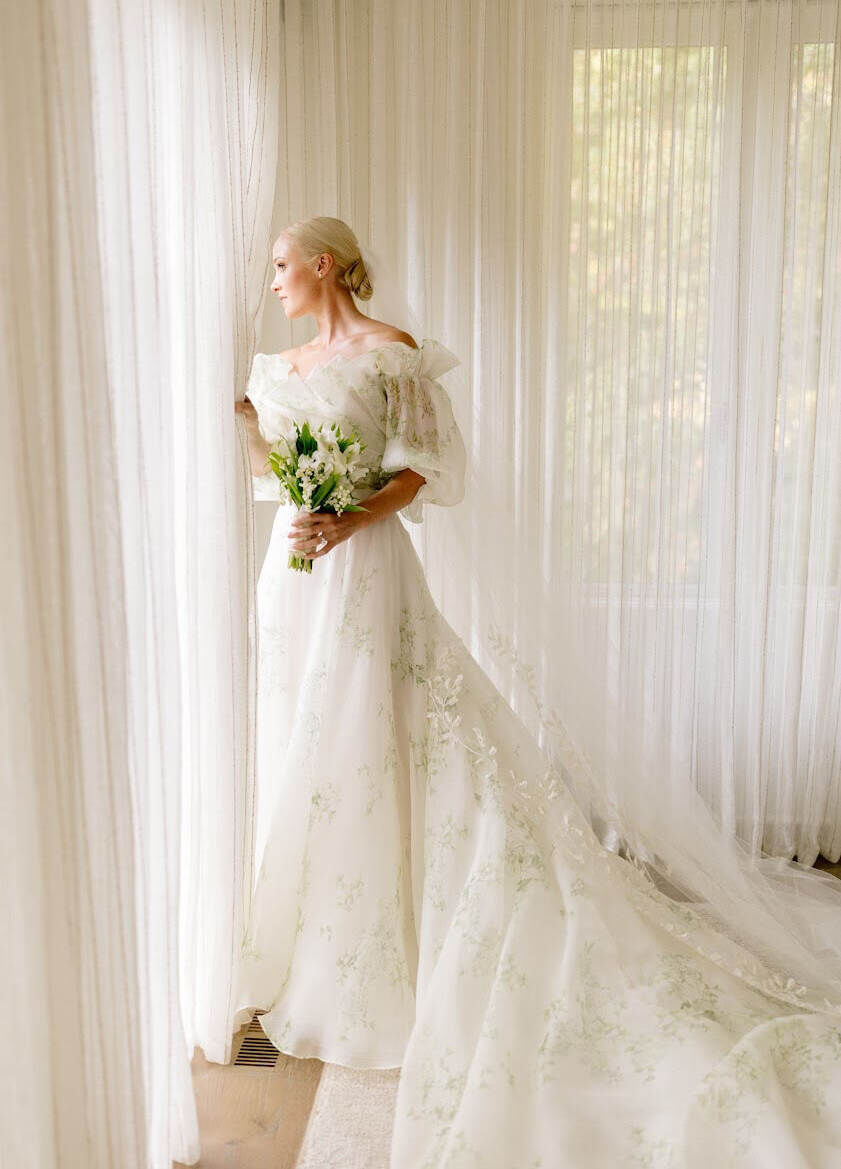
Figuring Out Your Style and What Works for You
You know what they say: Feel good, look good. Nothing rings truer on your big day, and you should keep that in mind while considering all of your wedding dress ideas. “The gown should make you feel like the best version of yourself,” shares designer Monique Lhuillier.
If you’re constantly tugging your dress up because you’re self conscious about your cleavage, you won’t feel like a million bucks in your gown. But if you approach the shopping process strategically, considering the parts of your body you love and want to accentuate and the parts of your body you’d rather play down, you’ll set yourself up for sartorial success.

Think of the dresses you love—and reach for—the most. And give your camera roll a thorough scroll—what photos taken of you do you think are particularly flattering? Hone in on the details of those outfits: What is your most flattering silhouette?
Maybe it’s a strapless gown with a sweetheart neckline—or maybe it’s a relatively modest silhouette with a cinched waist. Maybe it’s not a dress at all, but rather a more unconventional, on-trend trendy jumpsuit. Take it a step further: Are there any photos you really don’t like of yourself? What is it that bothers you? Does pure white make you feel totally washed out? You might prefer a warmer ivory or even something more unusual like a print (a signature style among Lhuillier’s collections) or a color. “I think sometimes knowing what doesn't work helps to weed out a lot and point you in the direction of what does work,” suggests celebrity stylist Micaela Erlanger.


Next, think about your wedding venue and whether it lends itself to one style or another. “The where and the when, I think, are key,” Erlanger advises. “Is it indoor in a ballroom? Is it outdoors in a garden? What time of day?” Though it may be your first choice stylistically, a ball gown would feel out of place on the beach, and an understated slip-dress might get lost in a gilded ballroom.
And don’t forget to consider other key factors, like the overall comfort of the dress. “A lot of people change, so thinking about how long you're going to be in your gown, where you're wearing it after the ceremony, if you're staying in it for cocktails, or are you doing your first dance and making sure that you can move and be comfortable, too, is all really important,” Erlanger adds.
When you find a happy medium—something that makes you feel amazing, but also looks appropriate for the occasion—you’ll know it. “You won't want to take the dress off,” Lhuillier says. “Trust your gut instinct.” And don’t forget to look for the visual cues, too. “Tears and sniffles and a flushed face usually go along with the package,” Ingram shares.


Where do you buy wedding dresses?
But where’s the best place to find your perfect fit? Wedding gown designs are available in a variety of different retailers, but many people typically start with multi-brand bridal gown shops. These wedding dress stores are popular, because you get the full experience—you can try on a wide range of wedding gown designs, from a wide range of designers, at a wide range of prices.
Of course, some designers also have their own shops, and these are great places to visit if you have your heart set on one or two designers and you know their gowns are within your budget. Since they’re experts in their own wedding gown designs, you can get really great, targeted service at these types of bridal shops. On the other hand, if you’re not sure which designer (or designers) you covet most, you may have to visit a lot of bridal designer shops before narrowing in on your top choice—which could take up a lot more time than you initially expected.


These types of retailers are the crème de la crème, but you also don’t necessarily have to go to a bridal-specific store for wedding dress shopping. Some major department stores also have bridal departments that carry a curated selection of designer gowns. Of course, you can also get both ready-to-wear (an outfit you can wear right off the rack) and non-ready-to-wear (wedding gown designs that require customization and alteration to fit) options—both white and otherwise—from any other fashion source, including online wedding dress stores.
“There are amazing edits online,” Erlanger shares. “So many e-commerce platforms and retailers have bridal edits: Net-a-Porter, Intermix, Saks, Moda, Matches—just about everybody is doing this now.”
And if you’re on a budget, or simply want something different from the new bridal dresses available, there are plenty of second-hand sources for wedding dress shopping too. You can find these options at dedicated shops like Nearly Newlywed. Or, you can scour local thrift shops and vintage stores until you find something that strikes your fancy. “I personally love vintage, because it's so special and truly one-of-a-kind,” Erlanger advises, while also warning that “vintage requires a hunt, and you never know what you're gonna get.”
Just note: While you can get something truly unique at these types of retailers, don’t take sizing at face value, as the dress may have been previously altered and vintage sizing is different. For your best chance at finding something that fits, have your measurements taken first, says Erlanger. And remember: Chances are, it will still need some type of alteration, so make sure to give yourself (and your tailor!) time to modify your dress.



Which wedding dress shopping tips should you know beforehand?
Ready to shop until you drop? There’s something very important you need to know first: You cannot walk into most wedding dress stores, meaning you will likely need to make an appointment with the boutique of your choosing before trying on those new bridal dresses. (Of course, this doesn’t apply to those looking for a ready-to-wear dress at a department store or those scouring vintage shops.) While it may sound fun to start wedding dress shopping on a whim, there's a good reason for this: Bridal boutiques offer one-to-one attention to help you find the perfect gown. When you make an appointment, you can be sure the wedding dress stores won’t be too crowded too, so you’ll have plenty of help and plenty of available styles to try on. In some cases, the salesperson can even pull options for you ahead of time. During your initial call or email correspondence, they’ll probably ask which wedding gown designs you’re already gravitating toward, which will really get the ball rolling.
On the day of your appointment, when you walk into most wedding dress stores, you will not see all of the styles that are available out on the floor—most showrooms simply don’t have enough space. What’s more, the dresses typically come in sample sizes, so don’t expect to find your exact match. The sales associate will ask you what kind of wedding dress you are looking for, bring out examples from the stockroom to show you, and then use clips or attach extra fabric to an open zipper so that you can get a feel for what the dress will look like on you.

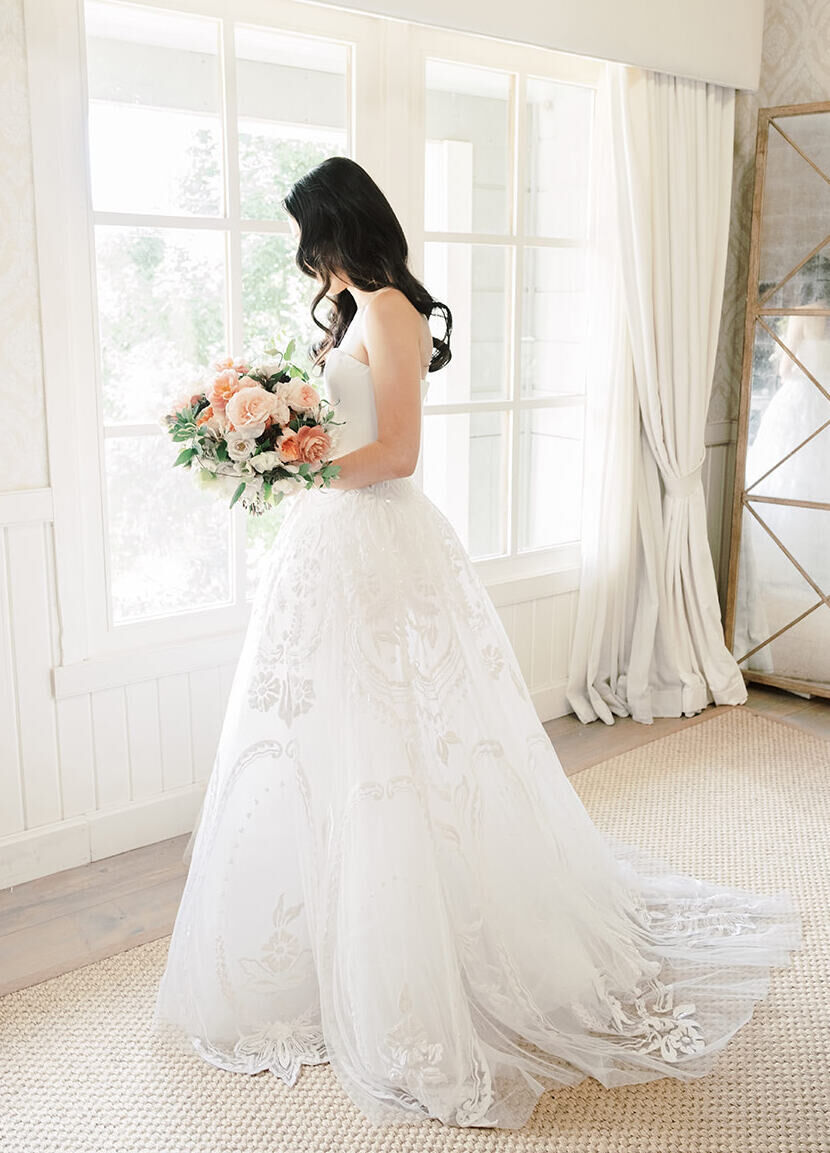
Because of this, it’s helpful to bring wedding dress pictures showing what you like to give to your sales associate. “Visuals are always a great idea, whether tear sheets, a virtual mood board or images on your smartphone,” Ingram suggests. “You know your body better than anyone. Be honest with your sales consultant about what areas of your figure you want to play up or down, and your style comfort level.” But try not to be completely closed off to other wedding gown designs, lest you miss out on something surprisingly wonderful. “It is good to be focused, but it is important to be open-minded and try something different as well,” says designer Reem Acra.
If you’re not sure which style you’re looking for, try to make your first appointment at a place that has more inventory of new bridal dresses on display (like a department store or larger bridal salon), so that you can try a few styles and begin to have an idea of your favorites. And, no matter where you’re shopping, consider trying on a dress that’s completely different from what you think you want. “You really should explore all the different styles because, chances are, you've never worn a ballgown before (unless you were a debutante),” says Julie Sabatino, a stylist and founder of The Stylish Bride. “In the beginning, try a smattering of things on—but also quickly eliminate what doesn't work, don't keep trying it on.”


Don’t forget to bring a few important items beyond your inspo too. “I tell my brides to wear their nude undergarments, and if they have an idea of what shoe they are planning to wear, to bring those as well,” shares designer Andrew Kwon. It’s also helpful to bring any jewelry you know you’ll be wearing—say, heirloom earrings your mother wore at her own wedding.
Should you go wedding dress shopping with family or friends?
Depending on your personality, it may also help (plus, be more fun!) to bring someone with you. Historically, shopping with a mother or mother figure is the typical choice. But today people often choose close friends or relatives—even guy friends or their father. And some even do their shopping alone. “I always say the best people to bring with you when shopping are the one or two—at most—whose opinions you trust and that mean the most,” Ingram recommends. “These appointments should be all about you and what you want and how you feel—no hidden agendas or ulterior motives wanted or needed here.”
That said, try not to bring your whole bridal party wedding dress shopping, no matter how close and trustworthy each person may be. This tends to create a “too many cooks in the kitchen” type of vibe, and can make the whole process more overwhelming. Plus, it’s fun to have your look be a surprise to all but one or two in the innermost circle. And even if you don’t share your choice with others, you might want to have a confidante or even the sales associate take wedding dress pictures during your try-on. That way, you can see how the different gowns compare in photos too.

How far in advance do you need to buy your wedding dress?
Once you’ve nailed down your date and venue, don’t delay in booking an appointment to select your gown. “As a general rule of thumb, if you're ordering a dress through a boutique, you need six to eight months to avoid rush fees,” Erlanger says. Not to mention, it’s important to give yourself enough time to try on different silhouettes and make the process fun, adds Lhuillier. If your timeline allows, Lhuillier also has one of the best wedding dress shopping tips: It’s helpful to begin shopping a year in advance. This strikes the perfect balance of affording you enough time to enjoy the process and place your order by about eight months out, so you have plenty of time for any customizations and alterations.
Don’t stress if you’re running short on time, though. While most custom wedding dresses take the better part of a year to be made, delivered, and fitted, all designers have different timelines. Some brands can deliver more quickly than others, so check in with the on-site professional where you’re wedding dress shopping to determine the best timeline for you.

How much does a wedding dress cost?
Now the really big question: How much is your wedding gown going to cost you? The answer is a bit open-ended, since there aren’t entirely clear-cut guidelines. Though recent data suggests people spent an average of $1,631 while wedding dress shopping (not including accessories or other wedding-related outfits), the average cost of a wedding dress largely depends on a variety of external factors, including the dress designer, the materials used, your location, and a few other key elements.
For example, the average cost of a wedding dress from luxury and couture designers starts somewhere between $2,000 to $4,000, while other bridal shops offer dresses under $500. Not to mention, you can source ready-to-wear pieces that work as wedding dresses from more relatively affordable designer lines.
If you're on a budget, you’ll want to opt for dresses made with blended or synthetic fabrics like polyester, or other lower-cost options like chiffon, taffeta, crepe, and rayon. More luxurious fabrics like silk, charmeuse, hand-embroidered lace, and satin are typically much more expensive. Likewise, the amount of beading, embroidery, appliqués, crystals, and other embellishments can also increase the cost of the gown.

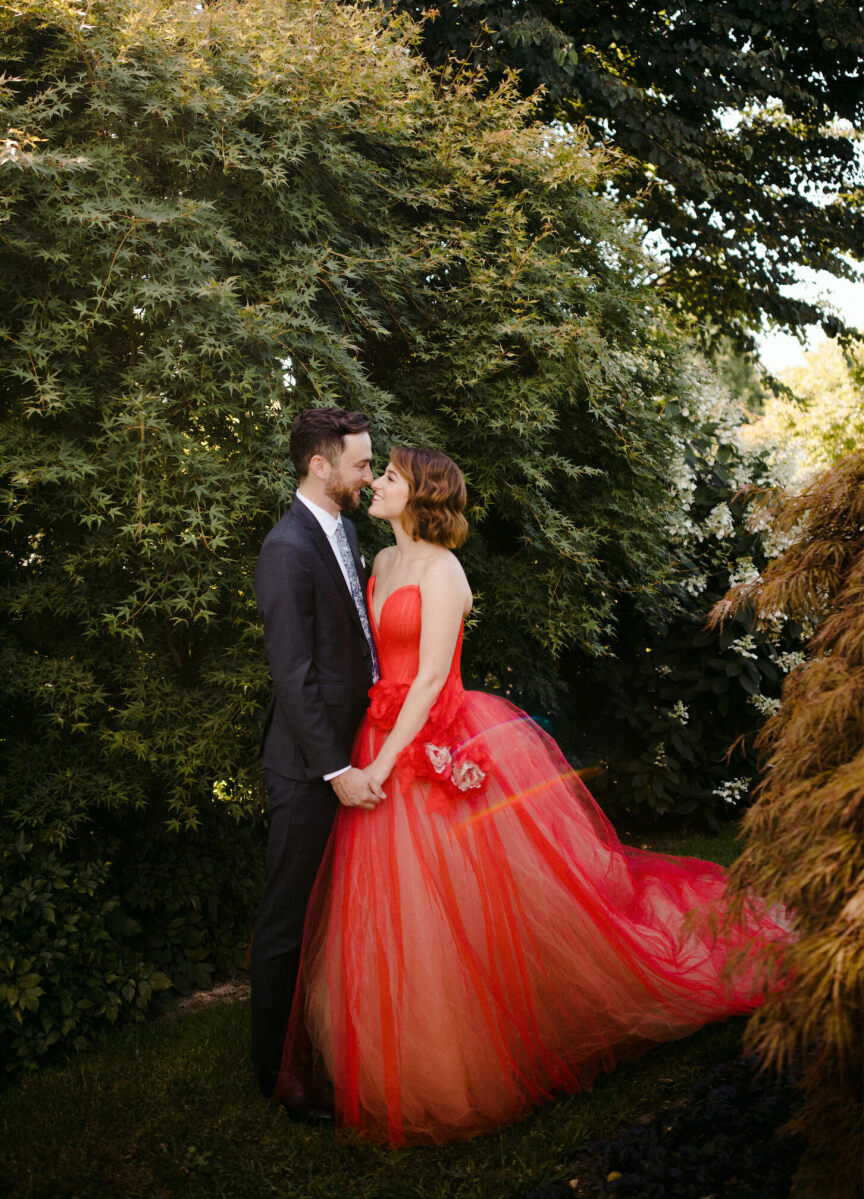
Though less in your control, your location may also dictate the full cost of your dress. Not only does sales tax vary from place to place, but goods also cost more overall in certain areas of the country. Take New York City, for example—the average cost of a wedding in the Big Apple is significantly higher than an event hosted in Idaho. Though just a fraction of the overall budget, wedding dresses should follow a similar trend.
And don’t forget to factor in everything needed for custom wedding dresses and alterations. Customizations—say extra beading, a different color, or even added length for tall ladies—will cost extra. And wedding dress alterations, which typically occur over the course of one to two fittings, typically costs a few hundred dollars (depending on what’s needed).


Some newlyweds-to-be, particularly those having destination weddings, need to factor in the cost of shipping their wedding gown. It’s hard to estimate the exact price due to many variables, including box size, delivery method, weight (most dresses weigh about five to 10 pounds), and distance, but up to a few hundred dollars is a safe bet. And don’t forget: Most retailers will charge additional fees for door-to-door tracking, insurance, and a signature requirement—key elements to make sure your dress gets where it needs to be safely.
Once your gown is in hand, the expenses don’t necessarily stop. Wedding gowns are, in many cases, investments that hold precious memories. If you want your gown to stand the test of time—perhaps to pass it down to another generation or to frame it—it needs to be properly cared for. The first step is to have a specialized dry cleaner give the dress a thorough clean within days or weeks of your wedding, ideally. Different dresses require different cleaning methods, but in most cases, they’ll use a virgin solvent to ensure it doesn’t yellow, crease, or form brown oxidation spots. You should expect to include this whole process of cleaning and preservation while determining your overall budget too.
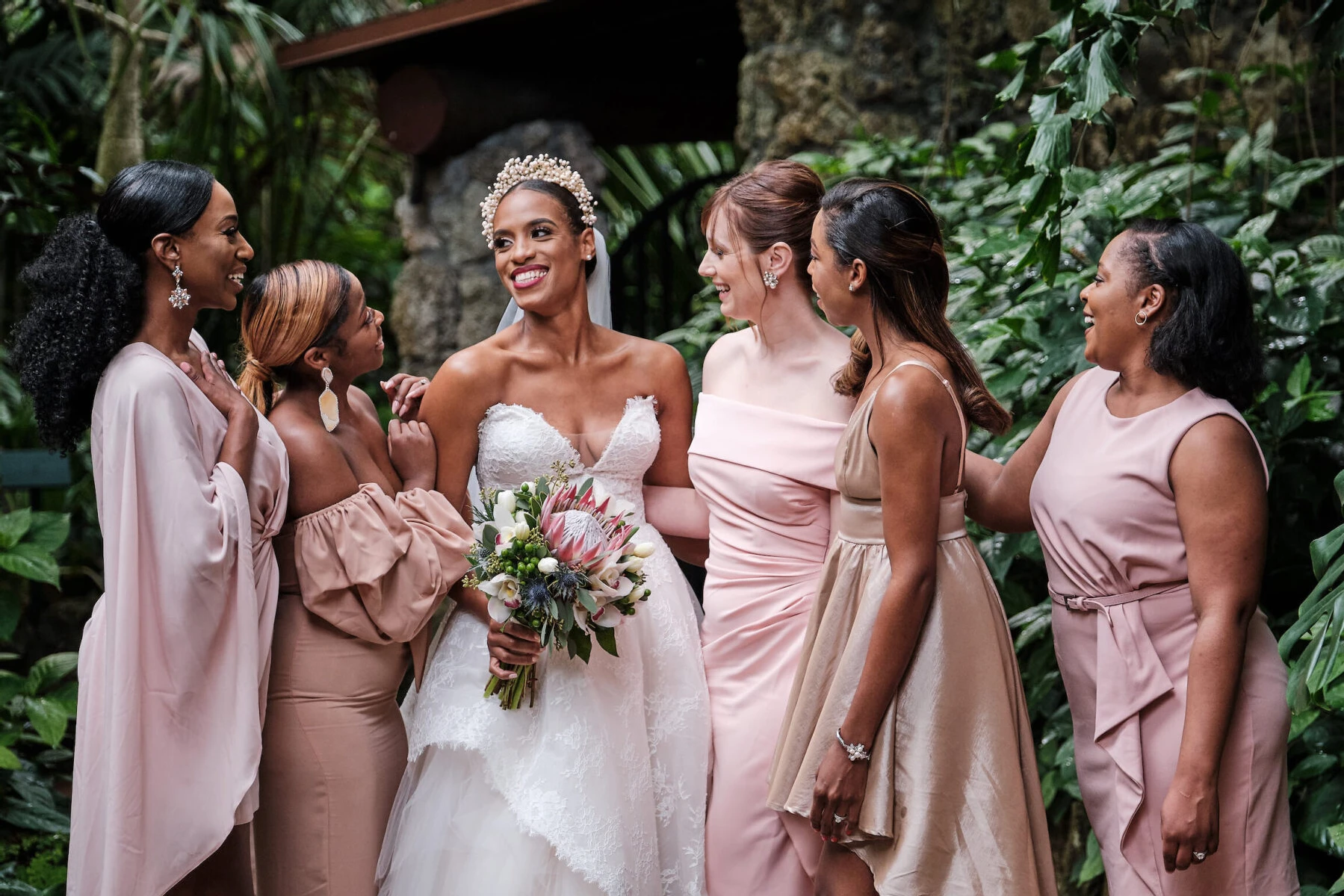
So, what’s next?
Buy it! Now that you’re equipped with all of the knowledge you need to find your perfect match while wedding dress shopping, it’s time to shop until you drop. And good news: We’ve done the hard work for you, by putting everything you need right at your fingertips. First, take a look at our extensive directory of weddings and prepare to draw inspiration from thousands of wedding dress pictures. From there, you can look at the vendor information for the dress and get in touch with designers and retailers with the click of a button. Plus, hiring stylists like Erlanger and Sabatino who can offer even more wedding dress shopping tips (and more much-appreciated services) will personalize your experience even more.
Happy hunting!



